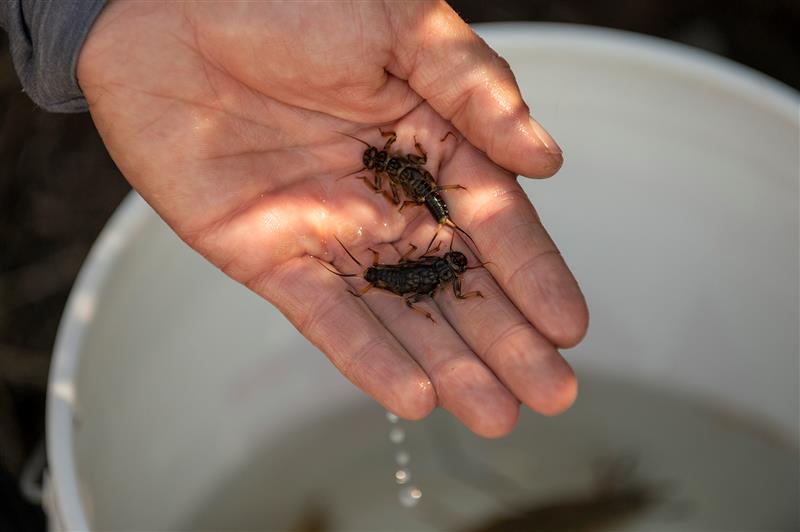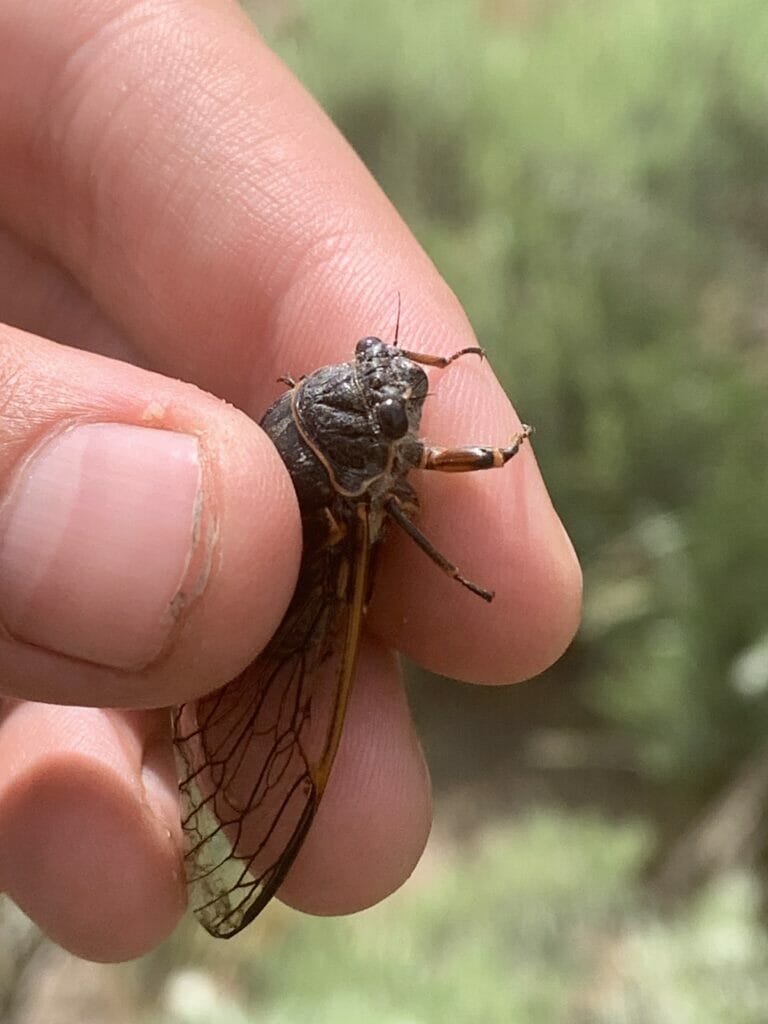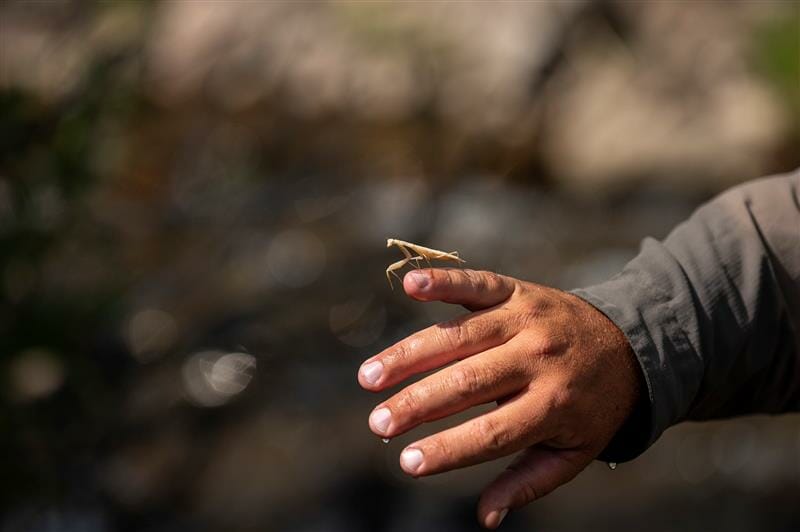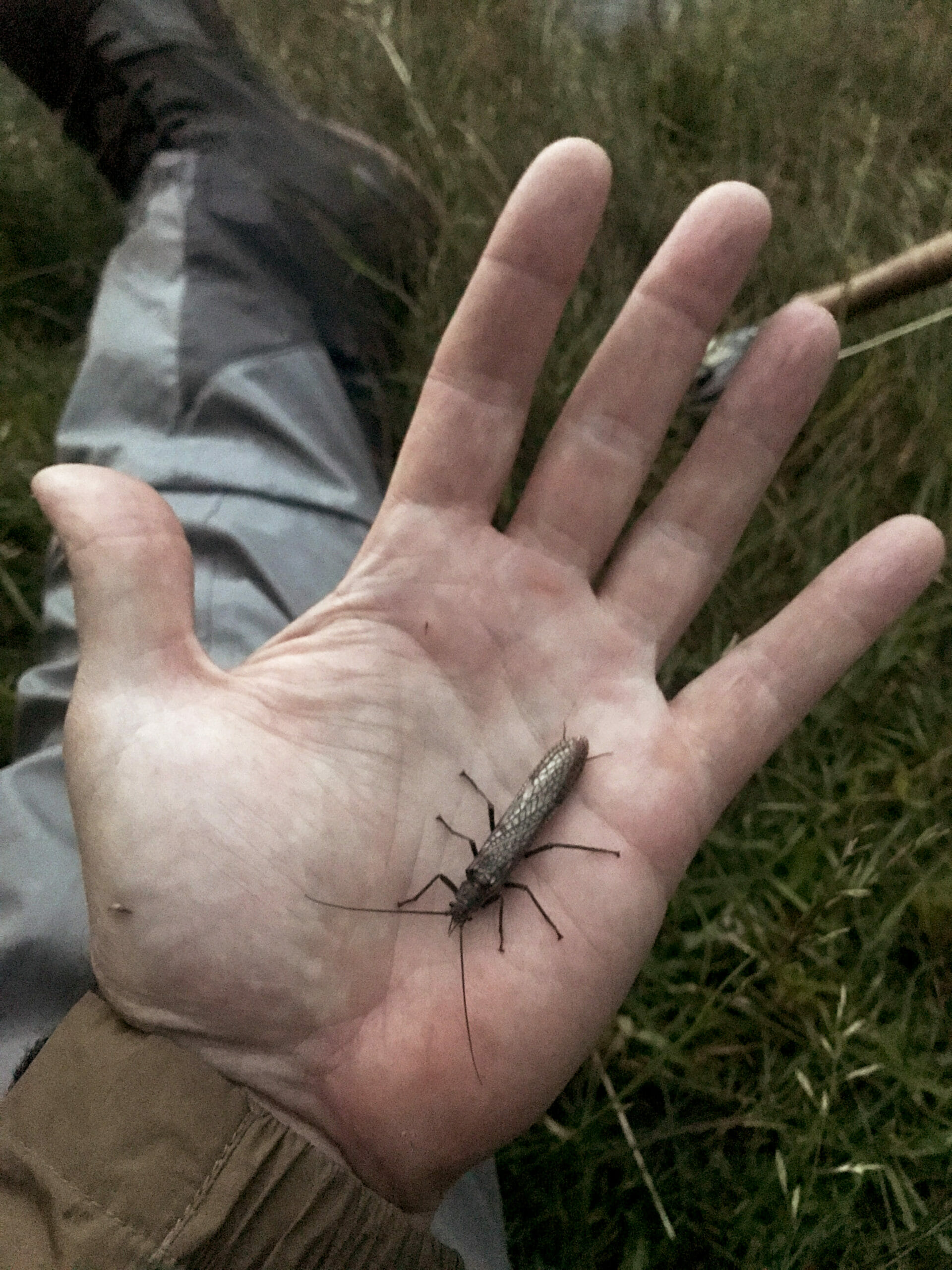By Natalie Stauffer-Olsen
We are currently living in the Anthropocene geological age, a period during which human activity is the dominant influence on climate and the environment. Given this, it is no surprise many scientific studies seek to determine the state of biological populations and communities.
While many have found biological population declines ubiquitous, a recent study from Roel Van Klink and others which included data from around the globe actually found aquatic insect abundances seem to be increasing.
Measuring biodiversity and its patterns is complex, but this study gives reason for hope.

As one might expect, many studies examining biological trends have come to depressing conclusions, such as a 2016 report from Ruben van Hooidonk and partners stating 90 percent of coral reefs will disappear by midcentury.
The Living Planet Index, which measures biodiversity abundance levels based on 16,704 populations of 4,005 vertebrate species across the globe, indicated an overall 60 percent decrease in vertebrate populations since 1970 in a 2018 World Wildlife Federation report. In this same analysis, freshwater species seemed to fare even worse with an 83 percent decline since 1970.
Even studies focusing on insect populations have found staggering declines. For example, a 2019 study by Francisco Sánchez-Bayo and Kris Wyckhuys provided a review of 73 historical reports of insect population declines from across the globe and concluded that more than 40 percent of insect species are threatened with extinction.
In a 2020 review paper by David Wagner, the declines of butterflies, moths, bees, and other groups are discussed. Numerous other studies have found similar declines in invertebrates (Thomas et al. 2004, Forister et al. 2011, Hallman et al. 2017).
Several studies looking at insect decline were described in the stark New York Times article “The Insect Apocalypse is Here“. I read this article when it came out and, like many others, was saddened and haunted by the information for weeks. Even insects, which seem so tiny and ubiquitous, were experiencing steep global declines?
This information surprised me in some ways. Hearing apocalyptic news seems to happen so often these days, it can be hard to believe, accept, and somehow integrate such information into one’s mind, heart, and daily existence. But more than that, some of the examples given in the article did not necessarily describe what I have seen in my career. As a doctoral student at UC Berkeley, I studied aquatic invertebrate communities, and qualitatively I did not observe the levels of decline that were making headlines. Perhaps there were more layers to the insect (and earth) apocalypse that needed to be revealed? Was there any reason for hope?

A recent paper by German researchers threw some water on the insect apocalypse fire, at least from an aquatic ecologist’s standpoint. This meta-analysis examined 166 long-term (10-plus years) insect and spider datasets collected from 41 different countries throughout the 20th century. The monitoring data had a median time span of 20 years and a median start year of 1986. This study, like those referenced above and many others, found evidence that suggested terrestrial insect abundances were declining.
However, in contrast to numerous other studies, van Klink and partners, actually found evidence suggesting the global abundance of freshwater insects is increasing. What’s more, the abundance increases the study found were big — approximately 11 percent per decade.
The conclusion from the van Klink study that global insect abundances are increasing, while uplifting, also didn’t really make sense to me. How could one study find such contrasting results to an entire suite of studies from across the globe?
Digging in a bit more, the picture becomes a little more complicated. For example, when the authors excluded 14 of the 166 datasets that qualified as outliers, terrestrial insects appeared to only be decreasing 0.66 percent per year, while freshwater insects were only increasing 0.34 percent per year. In addition, trends of data collected in protected areas were weaker than those in unprotected areas. Furthermore, most of the analyzed data originated from temperate North American locations where human land use is less intensive. Thus, areas where the strongest effects on insect abundances might be expected, such as the tropics, agricultural areas, and cities, were underrepresented in the van Klink meta-analysis.
Still, the increases in insect abundances indicated by the van Klink study give me pause, and perhaps even a little heart flutter. I believe there is reason for hope. The Clean Water Act, passed in 1972, has been incredibly influential in improving the quality of U.S. waterways and habitat for the freshwater species that call them home. Before the passage of this act, some rivers were so polluted they actually caught fire. I was not around to see the horrible condition that many streams and rivers used to be in because of uncontrolled pollution, but the studies included in the meta-analysis are old enough to capture what was surely a huge improvement in freshwater habitat and freshwater insect abundances.
Other policy decisions that have improved the freshwater ecosystems of North America might also be contributing to the increases in aquatic insect abundances found by van Klink and his research partners.
Changes in U.S. Forest Service regulations that limited timber harvest and other anthropogenic disturbances close to rivers and streams were found to improve some freshwater habitat characteristics (e.g., riparian cover) in the Pacific Northwest (Roper et al. 2019), which could translate to increased numbers and/or biomass of freshwater insects.

While too much nutrient pollution — raw sewage for example — can have disgusting implications for river and stream environments, some nutrient pollution can actually cause increases in insect abundance. The nutrient-rich sediments of Upper Klamath River in Oregon, for example, provide the perfect place for high density invertebrates to thrive (Stauffer-Olsen et al. 2017).
In rivers, especially those that are nutrient limited, some nutrient pollution from fertilizers, domesticated animals, and human development can increase the growth of algae, which provide important food resources to freshwater insects (Brett et al. 2017). It should be noted, however, that too many nutrients can lead to negative impacts, such as algae choking a system and creating poor structural and chemical environments that are food limited for insects and fish.
While it is clear that many animal populations, including many insect populations, are decreasing, the findings of the van Klink article offer an alternative narrative to the “insect apocalypse.”
Perhaps, with more thoughtful management of our natural resources and a commitment to conserve, restore and reconnect habitats, we could see increases in the abundances of other wild species as well.
Natalie Stauffer-Olsen is a scientist for Trout Unlimited’s Western Water and Habitat Program.



